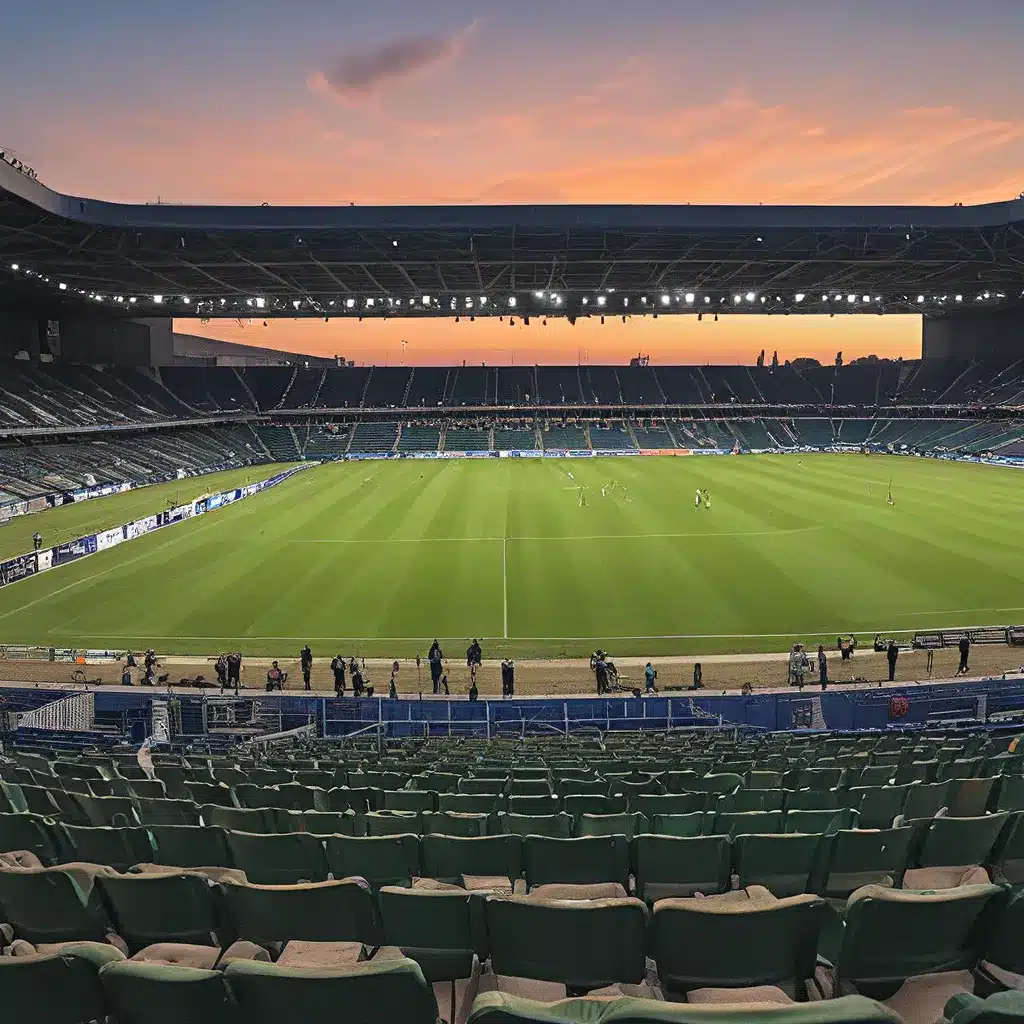
Nestled in the heart of Nantes, France, the Stade de la Beaujoire stands as a testament to the enduring passion and heritage of European football. This remarkable stadium, with its iconic architectural design and rich history, has played host to some of the most thrilling and memorable matches in the annals of the sport. As we delve into the captivating story of this hallowed ground, we uncover the legends that have graced its turf and the profound impact it has had on the local community and the world of football.
The Birth of a Sporting Icon
The origins of the Stade de la Beaujoire can be traced back to the early 1970s, when the city of Nantes recognized the need for a state-of-the-art football stadium to accommodate the growing popularity of the sport. Spearheaded by the visionary Mayor of Nantes, Michel Chauty, the project gained momentum, and in 1978, construction on the new stadium began in the Beaujoire district of the city.
The stadium’s design, conceived by renowned French architect Roger Taillibert, was a true masterpiece of modern architecture. Taillibert’s signature style, characterized by the use of sweeping curves and bold, angular structures, was evident in the Stade de la Beaujoire’s striking appearance. The stadium’s most iconic feature was its massive, cantilevered roof, which served not only as a functional element but also as a visually stunning centerpiece that captivated all who laid eyes on it.
A Home for Champions
The Stade de la Beaujoire officially opened its doors in 1984, with the local football club, FC Nantes, proudly taking up residence. This renowned club, with its rich history and storied legacy, immediately made the new stadium its fortress, thrilling the passionate fans who flocked to the ground to witness their team’s triumphs.
Under the guidance of legendary managers such as Jean-Claude Suaudeau and Raynald Denoueix, FC Nantes etched its name in the annals of French football history, winning multiple Ligue 1 titles and establishing itself as one of the country’s most dominant forces. The Stade de la Beaujoire became the stage upon which these remarkable achievements were celebrated, with the roar of the crowd echoing through the stadium’s halls and resonating across the city.
FC Nantes enjoyed a period of sustained success during the 1980s and 1990s, captivating the hearts of their devoted supporters and earning the respect of football enthusiasts throughout France and beyond. The Stade de la Beaujoire became a symbol of this triumph, a place where legends were forged and memories were etched into the collective consciousness of the Nantes faithful.
A Venue for the World’s Biggest Stages
The Stade de la Beaujoire’s significance extended far beyond the confines of its local community, as it played host to some of the most prestigious international football events. In 1984, the stadium was selected as one of the venues for the European Championship, with several matches being held within its hallowed walls.
The 1998 FIFA World Cup further cemented the Stade de la Beaujoire’s status as a global football destination, as it was chosen to host several matches, including the quarterfinal between the Netherlands and Argentina. The electric atmosphere and the quality of the matches played within the stadium’s confines left an indelible mark on the millions of fans who tuned in to witness the spectacle.
The 1998 World Cup was a landmark event for the Stade de la Beaujoire, showcasing its world-class facilities and the passion of the Nantes faithful to a global audience. The stadium’s seamless hosting of such high-profile events further solidified its reputation as a premier destination for the world’s greatest football competitions.
An Enduring Legacy
As the years have passed, the Stade de la Beaujoire has continued to evolve and adapt to the changing demands of the modern game. In 2007, the stadium underwent a major renovation, which saw the installation of a retractable roof and the modernization of its infrastructure to enhance the overall matchday experience for fans.
Today, the Stade de la Beaujoire remains a cherished and iconic landmark within the city of Nantes and the wider region of the Pays de la Loire. The stadium’s rich history, its architectural beauty, and its enduring significance in the world of football have made it a must-visit destination for passionate football enthusiasts from around the globe.
Old Stadium Journey invites you to embark on a journey of discovery, where you can explore the captivating story of the Stade de la Beaujoire and countless other legendary football grounds that have shaped the sport’s history. Through our comprehensive guides and insider insights, you’ll uncover the hidden gems and untold tales that make these stadiums so special, and gain a deeper appreciation for the enduring legacy of the beautiful game.
The Future Shines Bright
As the Stade de la Beaujoire enters a new era, the future of this iconic football venue looks brighter than ever. With its state-of-the-art facilities, unwavering commitment to providing an exceptional matchday experience, and the unwavering support of the Nantes faithful, the stadium is poised to continue its legacy as a beacon of excellence in the world of football.
Ongoing developments and innovations, driven by the club’s forward-thinking leadership and the city’s dedication to sports infrastructure, suggest that the Stade de la Beaujoire will continue to evolve and adapt to the changing needs of the sport. Whether it’s the integration of the latest technology, the enhancement of fan amenities, or the pursuit of sustainability initiatives, the stadium’s commitment to excellence ensures that it will remain a cornerstone of the Nantes community and a source of pride for football enthusiasts around the world.
As we reflect on the Stade de la Beaujoire’s rich history and gaze upon its promising future, it becomes clear that this legendary stadium will continue to captivate and inspire for generations to come. The magic of this hallowed ground, forged through decades of triumph, passion, and unwavering devotion, will endure, cementing its status as a true icon of the beautiful game.

